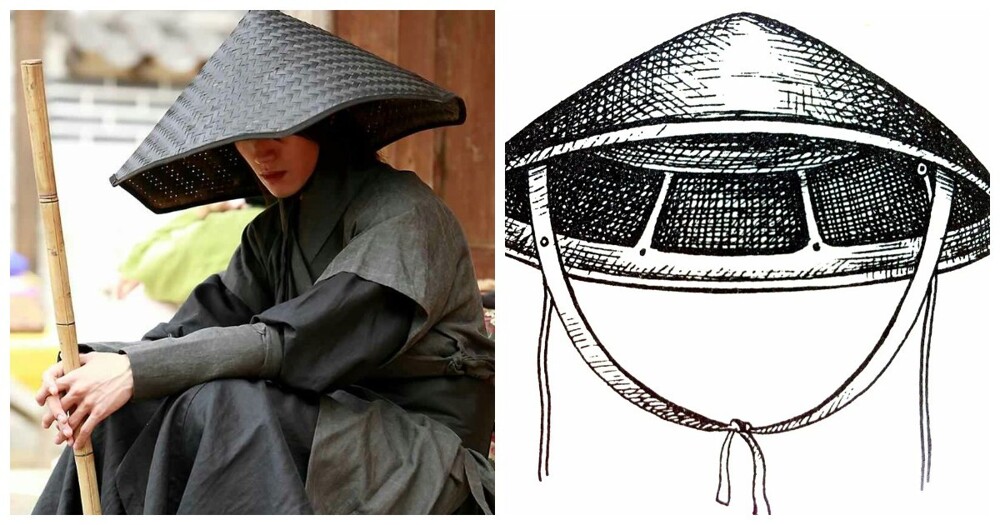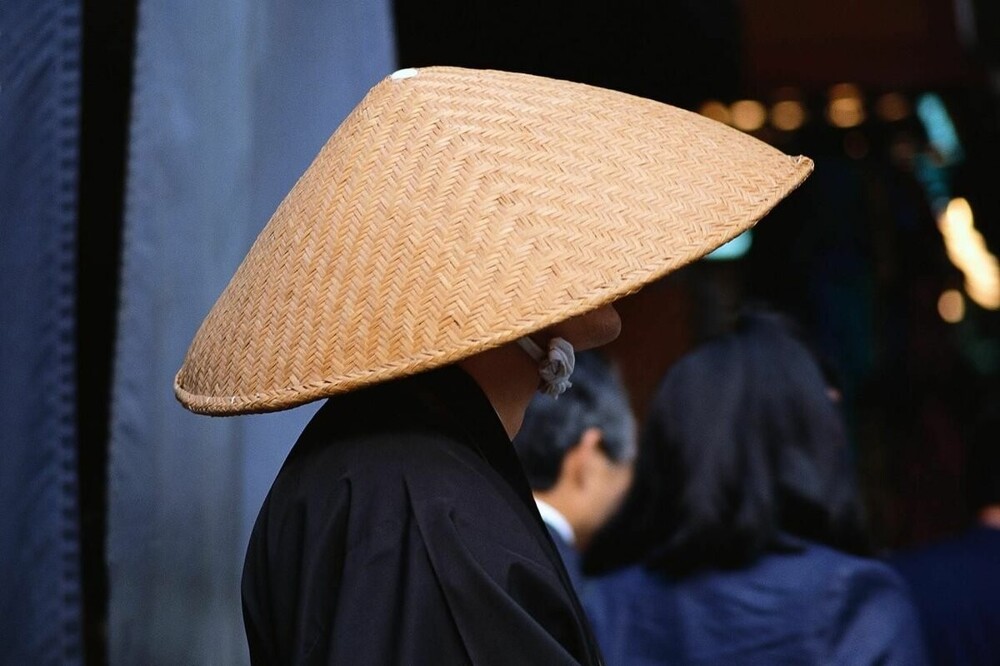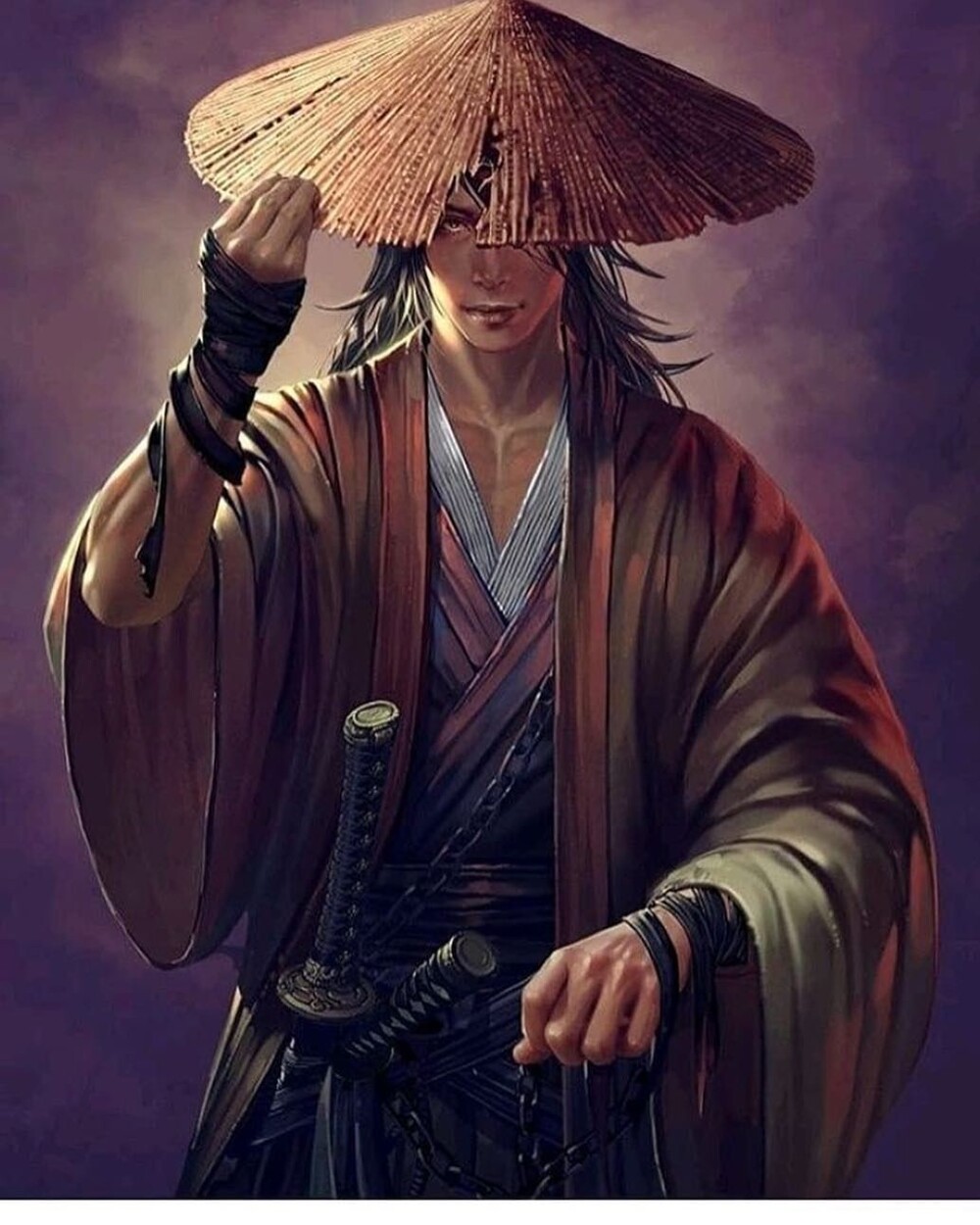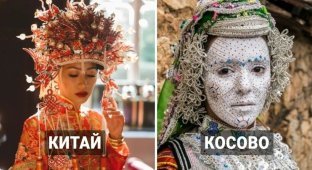Headgear as not the most obvious, but effective weapon (4 photos)
For the common Japanese people who worked on the land, the head headdresses played an important practical role. They also demonstrated belonging to a certain estate or class. But common travel hat, called the Amigasa, was also one additional hidden option. 
The word "amigasa" is translated as braided braid. And this one a wide-brimmed headdress was woven from rice straw in the form of a circle. But since hiking, and even over long distances, is a thing risky, then one day the idea came to someone's bright head to use an inconspicuous object of the image as a weapon. For this, the hat was reinforced an impressive iron hoop or fastened from the inside with several small sharp blades. 
The idea is useful and effective, because from under the impressive the visor and the face of the owner are not visible. Katana, of course, cannot be hidden, but small retractable blades, a small bow and other weapons of small dimensions easily. Another cone-shaped headdress was great for carrying arrows, which were neatly woven in the form of knitting needles. Of course, when Surprise played an important role in the use of such weapons. But despite simplicity and apparent primitiveness, the hat saved many of its lives owners. 
Amigasa was in use among the peasants, as it reliably protected during work and movement, not only from the scorching rays of the sun, but also from the rain. The special design could even completely close shoulders, making the hat a sort of piece of armor. Peasant development adopted not only peaceful travelers, but also samurai, as well as criminal elements of different levels. Therefore, some mistakenly take her for a piece of classic samurai attire. 
Some skeptics consider this functional load of headgear, but museum exhibits and historical archives do not only Japan, but also other Asian countries prove otherwise.

























